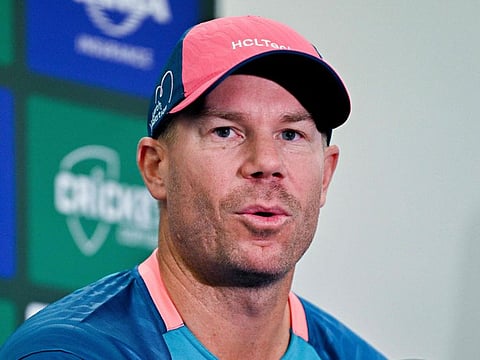Mould-breaker David Warner bows out on his own terms
I am still trying my best to get better, even in this last Test, Australian opener says

Sydney: David Warner admits he never quite fit the mould of a Test player, but this week will end his 12-year career on his own terms and in the same manner that other modern greats of the Australian game have made their exits.
Steve Waugh, Shane Warne and Glenn McGrath are just a few of the players who have taken their final bow in the New Year’s Test at Sydney Cricket Ground and, for his batting exploits at least, Warner deserves a place in the same conversation.
The left-hander set new standards for explosive openers in his early years in the Test game, bringing limited-overs shot-making and strike rates to the longest format and showing the ability to take the game away from an opponent inside a session.
The out-and-out master blaster of his younger days matured into a smarter cricketer whose place in the Test team was, until recently, never in doubt with media debate usually focused on who would bat with him at the other end.
While current captain Pat Cummins rates him as the best three-format player Australia has ever produced, Warner’s career will forever be blighted by his role in the ball-tampering scandal that traumatised the country in 2018.
That incident solidified him as a pantomime villain in England but elsewhere, particularly in India, his exploits with the bat have made him a switch-hitting superstar.
Clear idea of his legacy
Warner himself has a very clear idea of what his legacy should be.
“Someone who has gone out there and just given it his all,” the 37-year-old said without hesitation when asked the question on Monday.
“A boy from a housing commission having a dream. I’ve not always fitted the mould, but I’ve been authentic and honest. I think that shows on the field in Test cricket, I’ve played the exact same way.
“I’m even playing lap shots like I do in T20 cricket. I’m still trying my best to get better, even in this last Test. I’m hungry to score runs. It’s no different to any other game.”
Pending whatever he is able to muster against Pakistan this week, Warner has amassed 26 centuries and 8,695 runs at an average of just under 45 runs over 111 Tests since he made his debut against New Zealand in late 2011.
Limited overs specialist
Warner was born a stone’s throw from the SCG and played junior cricket with his now Test opening partner Usman Khawaja before becoming the first Australian to be selected for an international before he had played a first class match.
Initially considered a limited overs specialist, he got his chance in the Test side in the summer after the modern nadir of Australian cricket, the humiliating home Ashes loss to England in the 2010-11 season.
Warner banished the doubters with an unbeaten century in his second Test, a loss to New Zealand in Hobart, and in his fifth drove the point home with a sensational 69-ball hundred against India in Perth.
World comes crashing down
The runs continued to flow for the next few years and he won the Allan Border Medal as Australia’s best cricketer in 2016 and 2017 as well as being named vice-captain of the Test side.
His world came crashing down during a bad-tempered Test series in South Africa in 2018 when Cameron Bancroft was pictured with a strip of sandpaper in his hands at the third Test at Newlands.
Warner was branded the architect of the plot to scuff up the ball and banned from top class cricket for a year as well as from holding a leadership position in the Australia set-up for life.
Revelling with his family
He accepted his punishment, at least until a failed attempt to overturn the leadership ban last year, and reacquainted himself with the grassroots of the game as well as revelling in the time he was able to spend with his wife and the young family that is now his pride and joy.
Warner has never spoken in public about what went on in the fateful Test against South Africa and suggested again this week that the full story has not been revealed.
“One day, the truth will eventually come out,” he told the Sydney Morning Herald in an interview.
“Until that happens, it is what it is. I am at peace with it.”
Sign up for the Daily Briefing
Get the latest news and updates straight to your inbox


